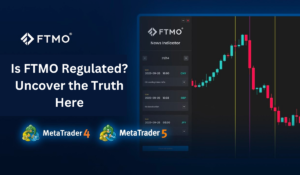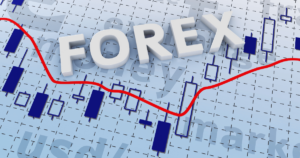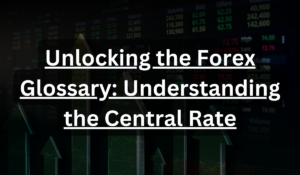Automated forex trading systems have revolutionized the way traders navigate the currency markets, offering a range of benefits and opportunities for generating profitable investments. These systems utilize algorithms, expert advisors, and trading bots to execute trades on behalf of traders, providing them with a powerful tool to increase their chances of success in the forex market.
By eliminating the need for manual trading, automated forex trading systems minimize emotional biases and promote consistency and discipline. Traders are no longer influenced by fear, greed, or other human emotions that can negatively impact their decision-making process. Instead, trades are executed based on predefined rules, ensuring that every trade is driven by a rational and systematic approach.
Another advantage of automated forex trading systems is the ability to backtest and optimize trading strategies. Traders can test their strategies using historical market data, allowing them to assess the viability and profitability of their approach. This feature enables traders to fine-tune their strategies and make data-driven decisions, increasing their chances of success.
However, it is important for traders to consider the drawbacks and limitations associated with automated forex trading systems. Over-reliance on technology can be a concern, as technical issues and failures can occur, potentially leading to financial losses. Additionally, the development of effective trading strategies can be challenging, and there is a risk of over-optimization, where strategies perform well in historical data but fail to deliver similar results in real-time trading.
Traders must also be aware of the potential for errors due to the speed and efficiency of automated trading systems. While these systems can execute trades at a rapid pace, there is a risk of errors occurring, which can result in significant losses. It is crucial for traders to carefully monitor their automated systems and have contingency plans in place to mitigate any potential risks.
When evaluating automated forex trading systems, it is essential to consider various factors. Traders should assess the performance history of the system, looking for consistent profitability and a track record of success. The cost of the system and any associated fees should also be taken into account, as this can impact overall profitability. Additionally, flexibility and ease of use are important considerations, as traders want a system that can adapt to changing market conditions and is user-friendly.
Key Takeaways:
- Automated forex trading systems utilize algorithms, expert advisors, and trading bots to execute trades on behalf of traders.
- Benefits of these systems include minimizing emotional biases, promoting consistency and discipline, and offering the opportunity for backtesting and strategy optimization.
- Considerations include over-reliance on technology, potential technical issues and failures, limitations in strategy development, over-optimization, and the potential for errors.
- Traders should evaluate factors such as performance history, cost, flexibility, and ease of use when choosing an automated forex trading system.
- Monitoring the system and having contingency plans in place are essential to mitigate risks associated with automated trading.
The Advantages of Automated Forex Trading Systems
Automated forex trading systems offer numerous advantages that can enhance your investment outcomes in the forex market. These computerized trading systems, also known as robotic trading platforms, utilize advanced algorithms, expert advisors, and trading bots to execute trades on your behalf. By removing the element of human emotion, these systems minimize biases and promote consistency and discipline in trading decisions.
One of the key advantages of automated forex trading systems is the ability to backtest and optimize strategies. With historical data, you can assess how your chosen algorithm would have performed in the past, allowing you to refine your approach and improve your chances of success. This process helps you develop a robust trading strategy that aligns with your goals and risk tolerance.
Another benefit is the elimination of manual execution, which can be time-consuming and error-prone. Automated systems execute trades with speed and efficiency, ensuring that opportunities are not missed and reducing the risk of human error. Additionally, with automated trading, you have the flexibility to monitor multiple currency pairs and markets simultaneously, which would be challenging to achieve manually.
Lastly, automated forex trading systems provide accessibility to traders of all experience levels. You don’t need to be an expert in technical analysis or have extensive financial knowledge to utilize these systems. Many platforms offer user-friendly interfaces and comprehensive support, making it easier for beginners to get started in forex trading.
| Advantages of Automated Forex Trading Systems |
|---|
| Minimizes emotional biases |
| Promotes consistency and discipline |
| Allows for backtesting and strategy optimization |
| Eliminates manual execution and reduces the risk of human error |
| Enables monitoring of multiple currency pairs and markets |
| Accessible to traders of all experience levels |
Drawbacks and Considerations of Automated Forex Trading Systems
While automated forex trading systems offer many advantages, it is important to consider the potential drawbacks and carefully evaluate various factors before incorporating them into your trading strategy. These systems, also known as electronic trading systems or algorithmic forex trading, have gained popularity for their ability to execute trades efficiently and without human intervention. However, like any other trading approach, they have their limitations and considerations that traders should be aware of.
One of the primary concerns with automated forex trading systems is the potential over-reliance on technology. While algorithms and trading bots can execute trades with precision, they may not always account for unexpected market events or changes in market conditions. Traders must remain vigilant and monitor the performance of these systems to ensure they align with their desired trading goals and strategies.
Technical issues and failures can also pose challenges when using automated forex trading systems. Internet connection problems, system glitches, or power outages can disrupt the execution of trades and result in missed opportunities or undesired outcomes. Traders should have contingency plans in place to address such issues and consider the reliability and stability of the systems they choose.
Over-optimization and limitations in strategy development
Another consideration is the potential for over-optimization of trading strategies. Automated forex trading systems utilize historical data to develop algorithms and strategies, but past performance does not guarantee future success. Traders must exercise caution and avoid overfitting their strategies to historical data, as it may lead to poor performance in real market conditions.
Moreover, automated forex trading systems may have limitations in strategy development. While they can execute trades efficiently, they may not be as effective in adapting to market changes or implementing complex trading strategies. Traders should consider their trading style and requirements when evaluating the suitability of these systems.
| Pros | Cons |
|---|---|
| Minimizes emotional biases | Potential over-reliance on technology |
| Promotes consistency and discipline | Technical issues and failures |
| Ability to backtest and optimize strategies | Over-optimization and limitations in strategy development |
In conclusion, while automated forex trading systems offer numerous benefits, it is crucial for traders to be aware of the drawbacks and considerations. Traders must carefully evaluate factors such as performance history, cost, flexibility, and ease of use when selecting an automated forex trading system that aligns with their trading goals and preferences. By understanding both the advantages and limitations of these systems, traders can make informed decisions and utilize them effectively in their trading strategies.
Evaluating Automated Forex Trading Systems
When selecting an automated forex trading system, it is crucial to evaluate key factors such as performance history, cost, flexibility, and ease of use to ensure it aligns with your investment goals and preferences. Evaluating these factors will help you make an informed decision and choose a system that maximizes your chances of success in the currency markets.
To start, examine the performance history of the system. Look for a track record of consistent profitability and low drawdowns. You want a system that has proven its ability to generate positive returns over time. Scrutinize any available performance metrics, such as average monthly returns or risk-adjusted ratios, to gain insight into the system’s performance under different market conditions.
Consider the cost associated with the automated forex trading system. Some systems charge upfront fees or require ongoing subscription payments. Evaluate the pricing structure and compare it to the potential returns the system may generate. It’s essential to find a balance between affordability and the value the system can bring to your trading activities.
Flexibility and ease of use are also critical considerations. Look for a system that allows customization and adapts to your trading preferences. The interface and user experience should be intuitive and easy to navigate. A system with a steep learning curve or limited functionality may hinder your ability to effectively utilize its capabilities. Take advantage of free trials or demo accounts whenever possible to evaluate these aspects before committing to a system.
| Factors to Evaluate | Considerations |
|---|---|
| Performance History | Consistent profitability, low drawdowns, risk-adjusted ratios |
| Cost | Upfront fees, subscription payments, potential returns |
| Flexibility | Customization, ability to adapt to trading preferences |
| Ease of Use | Intuitive interface, user-friendly navigation |
By thoroughly evaluating performance history, cost, flexibility, and ease of use, you can select an automated forex trading system that aligns with your investment goals and provides you with a competitive edge in the currency markets. Remember, the best system is the one that suits your individual needs and preferences, so take the time to research and analyze before making your decision.
Understanding the Role of Algorithmic Trading Software
Algorithmic trading software plays a vital role in automated forex trading systems, executing trades based on predefined algorithms and rules to maximize efficiency and accuracy. This software operates by analyzing vast amounts of market data, identifying trading opportunities, and executing trades at lightning-fast speeds. By removing human emotions and biases from the trading process, algorithmic trading software ensures consistent and disciplined execution, essential for achieving success in the dynamic forex market.
One of the key advantages of algorithmic trading software is its ability to conduct backtesting and strategy optimization. Traders can test their strategies on historical data to assess their performance and make necessary adjustments. With the ability to process large amounts of data quickly, the software can identify patterns and trends that may not be apparent to manual traders, enabling them to capture profit opportunities that might otherwise be missed. Additionally, the software can automatically adjust trading parameters based on market conditions, ensuring trades are executed with precision.
However, traders should also be aware of the potential drawbacks and limitations of algorithmic trading software. Over-reliance on technology can lead to issues when technical failures occur, resulting in missed trades or erroneous execution. Furthermore, there is a risk of over-optimizing strategies based on past data, which may not perform as expected in the future. Traders should exercise caution and regularly evaluate and adapt their strategies to changing market dynamics.
The Role of Artificial Intelligence (AI) in Algorithmic Trading
With advancements in technology, artificial intelligence (AI) has begun to play an increasingly significant role in algorithmic trading software. AI-powered systems can analyze vast amounts of data in real-time, identify complex patterns, and make trading decisions based on sophisticated algorithms. These systems continuously learn from market data and adapt their strategies accordingly, enhancing their ability to generate profitable trades.
| Advantages of Algorithmic Trading Software | Drawbacks and Considerations |
|---|---|
|
|
Overall, algorithmic trading software significantly enhances the efficiency and accuracy of automated forex trading systems. By leveraging technology and predefined algorithms, traders can capitalize on market opportunities and execute trades with precision. However, it is essential for traders to remain vigilant, continuously monitor their strategies, and adapt to changing market conditions to ensure long-term success.
Conclusion
Automated forex trading systems offer a promising avenue for profitable investments, but it is crucial to carefully evaluate and consider all factors before embracing the world of forex trading automation. These systems have revolutionized the way traders navigate the currency markets by utilizing algorithms, expert advisors, and trading bots to execute trades on behalf of traders.
One of the primary advantages of automated forex trading systems is their ability to minimize emotional biases, promoting consistency and discipline in trading. By relying on predefined algorithms, traders can avoid making impulsive decisions based on fear or greed. Additionally, these systems allow for backtesting and optimization of strategies, enabling traders to analyze historical data and fine-tune their approaches.
However, it is important to acknowledge the drawbacks and considerations associated with automated forex trading systems. Over-reliance on technology can be a concern, as technical issues and failures can occur. Traders should also be aware of the limitations in strategy development, as the effectiveness of these systems heavily depends on the quality and accuracy of the underlying algorithms. Over-optimization, in which strategies are tailored too closely to historical data, can also lead to poor performance in live trading. Furthermore, the speed and efficiency of automated systems can introduce the potential for errors, which need to be carefully monitored and managed.
When choosing an automated forex trading system, thorough evaluation is essential. Traders should consider factors such as the system’s performance history, cost, flexibility, and ease of use. Performance history provides insights into the system’s past profitability and consistency, while cost considerations should include both upfront expenses and ongoing fees. Flexibility allows traders to adapt the system to their individual preferences and risk tolerance, and ease of use ensures a smooth trading experience.
In conclusion, while automated forex trading systems offer great potential for profitable investments, it is crucial to approach them with caution. Traders must evaluate the advantages and drawbacks, consider important factors, and select a system that aligns with their goals and requirements. By doing so, they can harness the power of automation while effectively managing the associated risks in the dynamic world of forex trading.
FAQ
Q: What are automated forex trading systems?
A: Automated forex trading systems are computer programs that utilize algorithms, expert advisors, and trading bots to execute trades on behalf of traders in the currency markets.
Q: What are the advantages of using automated forex trading systems?
A: Automated forex trading systems offer advantages such as minimizing emotional biases, promoting consistency and discipline, and providing the opportunity for backtesting and strategy optimization.
Q: What are the drawbacks and considerations of automated forex trading systems?
A: Some drawbacks and considerations of automated forex trading systems include over-reliance on technology, potential technical issues and failures, limitations in strategy development, over-optimization, and the potential for errors due to speed and efficiency.
Q: How should I evaluate automated forex trading systems?
A: When evaluating automated forex trading systems, it is important to consider factors such as performance history, cost, flexibility, and ease of use.
Q: What is the role of algorithmic trading software in automated forex trading systems?
A: Algorithmic trading software plays a crucial role in executing trades within automated forex trading systems. It operates based on predefined algorithms and is essential for the efficiency and accuracy of trade execution.








